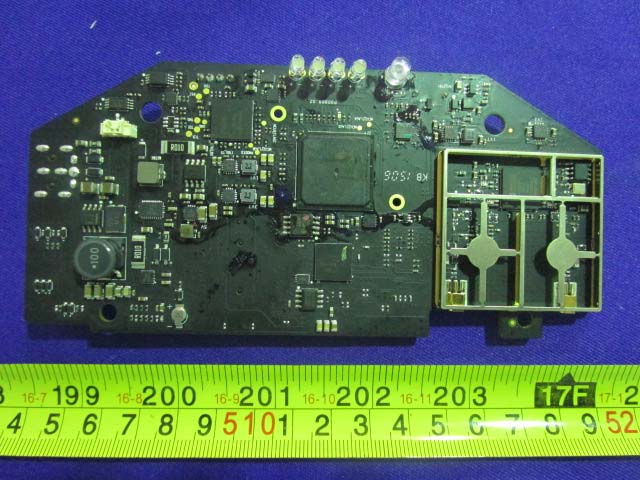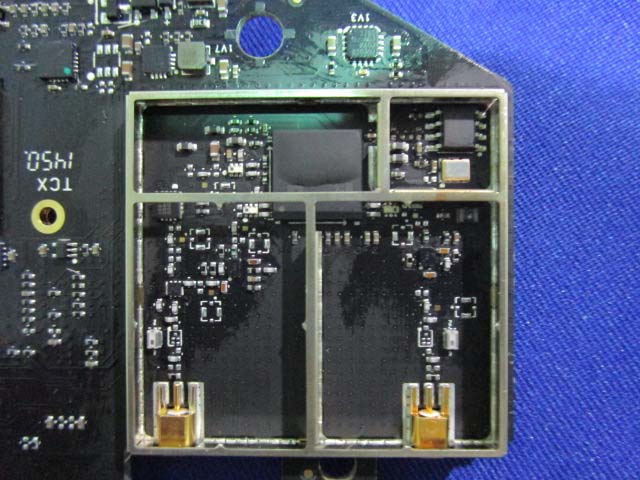Introduction
The DJI Phantom 3 Professional (FCC ID SS3-GL3001501) revolutionized aerial photography, offering enthusiasts and professionals alike a powerful quadcopter capable of delivering stunning 4K video and crisp 12-megapixel images. As a leader in consumer drone technology, DJI designed the Phantom 3 Professional to provide unmatched stability, ease of use, and reliable performance. Certified under FCC ID SS3-GL3001501, this drone meets stringent U.S. electromagnetic interference standards, ensuring it is legally compliant for sale and use within the United States.
In this comprehensive analysis, we’ll dive deep into the Phantom 3 Professional’s key specifications, wireless technologies, and internal hardware components. Leveraging insights from the device’s FCC filing (SS3-GL3001501), we’ll explore the drone’s intricate PCB design, RF modules, and power management systems. Whether you’re a drone enthusiast, a tech-savvy professional, or simply curious about the internal workings of one of DJI’s iconic drones, this teardown and spec exploration will provide valuable insights into the Phantom 3 Professional’s cutting-edge technology.
Key Features & Specifications
The DJI Phantom 3 Professional brings a wealth of advanced features designed to enhance the user’s aerial photography experience:
Key Features:
- 4K Video & 12MP Stills: Captures ultra-high-definition video and high-resolution still images for professional-quality results.
- Return to Home (RTH): Smart RTH, Low Battery RTH, and Failsafe RTH ensure safe drone retrieval.
- Vision Positioning System: Enables precise indoor hovering and stable flight even without GPS.
- DJI Intelligent Flight Battery: 4480 mAh battery with advanced battery management system for optimized flight times.
- DJI Lightbridge HD Video Downlink: Streams real-time HD video from drone to controller.
- Integrated 3-Axis Stabilization Gimbal: Offers smooth and stable footage even during complex maneuvers.
- Flight Recorder: Automatically records flight data, accessible via the DJI Pilot app.
Technical Specifications:
- Flight Modes: P mode (Positioning), A mode (Attitude), F mode (Function)
- Camera Resolution: 12 megapixels
- Video Resolution: 4K Ultra-HD
- Dynamic Home Point: Supported (Aircraft or mobile device coordinates)
- Bluetooth: Integrated (specific usage details unavailable)
- Battery Capacity: 4480 mAh
Wireless Specifications (from FCC filing SS3-GL3001501):
| Frequency Range (GHz) | Output Power (mW) | FCC Rule Part |
|---|---|---|
| 2.404-2.48 | 38 | 15C1 |
Technology Deep Dive
The Phantom 3 Professional primarily operates within the widely used 2.4 GHz wireless frequency band, commonly associated with Wi-Fi and Bluetooth technologies. This frequency choice ensures reliable connection stability, adequate range, and compatibility with numerous consumer electronics. With a modest output power of 38 mW, the device balances effective communication range with compliance to FCC regulations (FCC ID SS3-GL3001501), minimizing interference potential.
Moreover, DJI’s proprietary Lightbridge technology provides robust HD video transmission to the remote controller. The integration of Bluetooth (specific applications undisclosed in FCC documentation) suggests additional connectivity options, possibly for pairing or firmware updates. Overall, the wireless technologies employed by Phantom 3 Professional efficiently manage power consumption while ensuring reliable, interference-resistant operation.
In-Depth Internal Component Analysis / Teardown
At the core of the Phantom 3 Professional lies a sophisticated PCB, featuring a prominent IC marked “TCX 1450,” likely the primary processor or System on Chip (SoC). This central component is crucial for handling intensive tasks like flight control computations, video processing, and real-time communication. Surrounding smaller ICs, possibly RAM or flash memory modules, support this powerful processing core. The PCB’s black FR4 material and multi-layered construction (likely 4-6 layers) indicate a high-quality, carefully engineered design prioritizing signal integrity and thermal management. A metal shield encloses sensitive RF components, minimizing electromagnetic interference.

The subsequent PCB image reveals another large IC, possibly a microcontroller unit (MCU) or secondary processor responsible for power management or control tasks. The sophisticated layout includes differential pair routing and multiple power rails (3.3V, 5V, 1.1V), indicating precise voltage regulation to various system components. LEDs visible at the board’s edge likely provide diagnostic and operational status indicators.

Further internal imagery highlights the dense component distribution, with metal shielding clearly visible. The board hosts multiple connectors, presumably interfacing with motors, sensors, or battery systems. Inductors and capacitors suggest robust power management circuits essential for stable drone operation.

Another PCB section notably includes active cooling via a small fan, indicative of high-performance processors requiring enhanced thermal dissipation. This proactive cooling approach underscores DJI’s commitment to reliability and sustained performance during extended drone operation.

Similar cooling strategies appear consistently across other internal components, reinforcing the drone’s focus on performance and reliability. The intricate PCB layouts, shielding cans, and power regulators reflect DJI’s meticulous engineering standards for optimal signal integrity and reduced electromagnetic interference.

Additional internal views reveal RF connectors (U.FL type) for external antennas, further emphasizing DJI’s attention to robust wireless communication. These connectors likely facilitate Wi-Fi or GPS signals, critical for accurate flight control and real-time video streaming.

Regulatory Insights & FCC Filing
FCC certification under FCC ID SS3-GL3001501 confirms the DJI Phantom 3 Professional meets stringent U.S. electromagnetic interference standards, allowing legal sale and use. FCC filings typically include test reports detailing RF exposure, electromagnetic compatibility (EMC), internal photos, user manuals, schematics, and block diagrams. According to the manuals, the Phantom 3 Professional integrates advanced safety features like Vision Positioning, Intelligent Flight Battery management, and comprehensive Return to Home modes, further underscoring its compliance and safety standards.
Potential Use Cases & Target Audience
The Phantom 3 Professional, with its high-quality 4K camera and stable flight capabilities, is ideal for professional photographers and videographers capturing aerial footage. Real estate professionals can leverage it for property showcasing, offering detailed aerial perspectives. Additionally, infrastructure inspectors and surveyors benefit from its precise hovering and advanced positioning systems for inspections in environments where GPS signals are weak or unavailable.
Conclusion
The DJI Phantom 3 Professional (FCC ID SS3-GL3001501) stands as a testament to DJI’s commitment to quality, innovation, and regulatory compliance. Its powerful camera system, advanced flight features, and meticulously engineered internal components position it as a reliable tool for diverse professional applications. Certified under FCC guidelines, it exemplifies excellence in consumer drone technology, maintaining DJI’s leadership in the aerial imaging market.